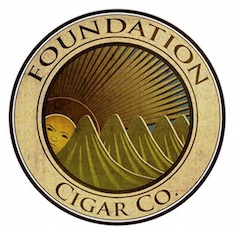February 15, 2007 could turn out to be the most important date in the history of the premium cigar industry. Why, you ask? Because every cigar introduced after that date could soon be made illegal by the Food & Drug Administration (FDA).

While the so-called Family Smoking Prevention and Tobacco Control Act (FSPTC)—the bill giving the FDA the power to regulate cigars—didn’t pass until June 2009, the legislation sets February 15, 2007 as the cutoff date for tobacco products to be grandfathered in as exempt from needing FDA approval before being sold or marketed in the United States.
Tobacco products introduced after that date (which comes from the text of the legislation and probably cannot be altered by the FDA, even if the agency wanted to) must receive the FDA’s approval before they can be marketed for sale. For a period from passage of the FSPTC until March 22, 2011, new tobacco products could be marketed while an application was pending but, as the FDA reiterated recently, any new product that didn’t have an application submitted by that date cannot be marketed until the FDA takes action to approve it. This would apply to cigars when they are subject to FDA regulation, despite the fact the FDA hadn’t even taken the first step towards regulating cigars in March 2011, and so no cigar applications would have been submitted.
Theoretically, new cigars should get approved as “substantially equivalent” to products that were already on the market in 2007 since the basic components of handmade cigars haven’t changed in at least a century. But the process is surprisingly complicated, likely very expensive, and includes an “Environmental Assessment” and a “Health Information Summary” along with a requirement for scientific studies about how the product would be used in comparison to the product it is being claimed as substantially equivalent to. In other words, you’d probably need deep pockets, lawyers, and scientists to have a chance.
Plus, so far the FDA hasn’t shown any ability to handle existing applications. As we observed when the Deeming Rule was first proposed, only a few dozen of the 4,000 pending applications were ruled on as of April last year, with just 17 being approved over the period of multiple years. As of now, the FDA site says it has approved only 132 products as “Substantially Equivalent” since 2011, while an untold amount remain waiting for a ruling.
The FDA did propose in its rules one option for an exemption for premium cigars with a retail price of $10 or more, but even if the agency adopts that option it would leave the vast majority of cigars (85%, according to one analysis) to be banished from the market and forced to wait for an approval that may be nearly impossible to get.
February 15, 2007 is a long time ago, so allow me to set the stage: On that date we published a Quick Smoke of the Gispert Lonsdale (remember that cigar?), and you couldn’t yet buy an Apple iPhone because the first one didn’t go on sale until later that summer.
As far as cigars go, here are just a few introduced in 2007, but after the February cutoff date: Oliva Serie V, San Cristobal, Padrón Serie 1926 80 Years, CAO America, Te-Amo World Selection Series, Santa Rosa (an Altadis cigar I forgot ever existed), Rocky Patel Sumatra Edge, Cabaiguan Guapo, La Aurora Corojo Oscuro Barrel Aged, and the Cuban Cohiba Maduro (which, if the embargo ever ends, would also be subject to the regulations).
To say the industry has changed since then would be a gross understatement, as evidenced by the fact that multiple cigars listed above are no longer being made. For most cigar smokers I talk with, the vast majority of cigars they smoke were introduced well after 2007.
Cigar rights groups are now looking to push legislation that would amend the date for new cigars to be grandfathered in. This seems extremely reasonable. After all, how can cigars have complied with a regulation two years before passage of the bill authorizing the FDA to regulate cigars, and five years before the agency took any steps towards exercising its power to regulate cigars?
The problem is that reasonable doesn’t buy you much when it comes to passing federal laws. And considering the difficulty in getting support for the Traditional Cigar Manufacturing and Small Business Jobs Preservation Act in Congress, there isn’t much indication that there are majorities in Congress that want to treat cigars reasonably, nor that President Obama would sign such legislation if it somehow made it to his desk.
–Patrick S
photo credits: Stogie Guys



 1) On Monday, Pennsylvania legislators unanimously rejected Democratic Gov. Tom Wolf’s (pictured) tax plan that would have increased the state’s excise tax on cigars from 0% to 40%. “Republicans and Democrats had much different reasons for voting against it,†according to the
1) On Monday, Pennsylvania legislators unanimously rejected Democratic Gov. Tom Wolf’s (pictured) tax plan that would have increased the state’s excise tax on cigars from 0% to 40%. “Republicans and Democrats had much different reasons for voting against it,†according to the  And with the annual IPCPR Trade Show less than two months out, more and more new cigars are being announced. (As we have seven out of the past eight years, StogieGuys.com will be covering the IPCPR from the show floor, which this year is in humid New Orleans in late July.)
And with the annual IPCPR Trade Show less than two months out, more and more new cigars are being announced. (As we have seven out of the past eight years, StogieGuys.com will be covering the IPCPR from the show floor, which this year is in humid New Orleans in late July.) Some of you may recall the Gurkha Cellar Reserve line was introduced in the summer of 2011. “The vintage Cellar Reserve uses the finest quality 15-year-old aged tobacco, comprised of an oily Criollo ’98 wrapper, that combines an aged Dominican Olor binder with a 15-year-old Dominican filler,†reads the Gurkha website. “Housed in unique wooden boxes that aesthetically evoke a maturing wine barrel, the Cellar Reserve is a delicious medium- to full-bodied cigar that is full of flavor and complexity.â€
Some of you may recall the Gurkha Cellar Reserve line was introduced in the summer of 2011. “The vintage Cellar Reserve uses the finest quality 15-year-old aged tobacco, comprised of an oily Criollo ’98 wrapper, that combines an aged Dominican Olor binder with a 15-year-old Dominican filler,†reads the Gurkha website. “Housed in unique wooden boxes that aesthetically evoke a maturing wine barrel, the Cellar Reserve is a delicious medium- to full-bodied cigar that is full of flavor and complexity.â€

 The
The 
 Patrick Ashby
Co-Founder & Editor in Chief
Patrick Ashby
Co-Founder & Editor in Chief Patrick Semmens
Co-Founder & Publisher
Patrick Semmens
Co-Founder & Publisher George Edmonson
Tampa Bureau Chief
George Edmonson
Tampa Bureau Chief